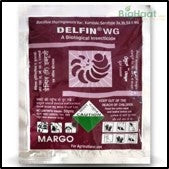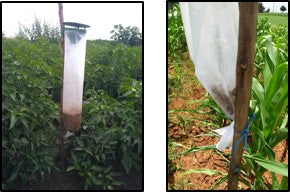Fall armyworm- a threat to Maize farmers

Fall Armyworm (Spodoptera frugiperda) has become serious pest for maize in India. It is called as Sainik keet in Hindi, Sainika hulu in Kannada, Laddi purugu in Telugu and it is native of America. Previous year this cut worm also affected the finger millet crop in some districts of Karnataka.
Damage:
- Ragged feeding leaving moist soft sawdust like frass near the funnel and upper leaves. Larvae enters in to the plant feeding on the growth tips and tassles are destroyed.

- Armyworms usually feed at night and damage corn by chewing leaves.
- Infestations usually first develop in fields of small grains or in other grass cover crops.
- In conventional tillage systems, partially- grown larvae can migrate into corn fields from grassy waterways or wheat fields, damage is usually first noticeable around the field margins adjacent to these areas.

- The name armyworm derives from its behavior of migrating in large numbers into fields like invading armies. In no-till or reduced tillage systems, infestation may cover the entire field. In these systems, eggs may be laid on grasses within the field prior to planting and herbicides may force armyworms to feed on corn as the weeds or cover crop dies.

- Cool, wet, spring weather usually favors armyworm development.
About Insect
- The full-grown 1-1/2-inch armyworm has a greenish brown body with a thin stripe down the center and two orange stripes along each side. The head is brown with dark honeycombed markings.

- Eggs are small, greenish-white, globular, and laid in clusters of 25 or more on the leaves of grasses.

- The moth has a wingspan of about 1-3/4 inches.

Biology – Life Cycle
The life cycle of Fall Army worm is completed in about 30 days in optimum conditions.
Moths lay eggs in groups of 50-200 where caterpillar hatch out usually in 3-5 days. Larval stage is of six instars and in 2nd and 3rd instar stages only one larva in the whorl is left out other larvae will be eaten by the stronger one.


After 6th instar pupal stage normally takes place in the soil, at a depth of 2 to 8 cm. The caterpillar spins an oval shaped loose cocoon 2-3 cm in length, by tying together particles of soil with silk. Pupal stage duration ranges is 8 - 30 days.

The adults emerge out form the pupae and lay eggs after mating on leaves. The adult female moth can fly up to 100 km in a single night.


I. Chemical control of Fall Army Worm
Following chemicals may be used to kill the pest. Spraying in the evening will be effective since they come out to feed in the night times.
Delegate 0.9 mL/L + Econeemplus 1 % - 1 mL/L

After 7 days
Emagold 0.5 gm/L OR Rilon 0.5 gm/L + Nuvan 1 mL/L

If problem persists
Coragen 0.33 mL/L + Neemark 1 % - 1 mL/L

II. Organic control of Fall Army Worm
a. Spray Delfin 1 gm/L

b. Baiting may also be administered to kill the army worms
The army worm will be dwelling in the soil and will be coming out to feed the baiting technique may be an effective method to kill them. As the bait has attractant jaggery the larvae gets attracted to jaggery, feed on the bait mixture and will be killed avoiding them to feed on the corn. Bait mixture must be evenly broadcasted evenly all over the maize plot.
The process of baiting can be a mixture of 3 components,
- Poison (Insecticide): 2. Carrier or base (Rice bran), and Attractant (Jaggery) at ratio of 1:10:1. Mix all the items with given ratio to prepare the bait mixture.
The poison may a stomach poison insecticide can be used like Malathion or Larvin

for organic management bait may be Delfin 200 gm

c. Setting up para pheromone lure traps
Fall Army Worm lures in the traps utilize insect hormones that simulate the type of scent produced by the female insect to seduce or lure their male counterparts. Males lured into traps are prevented from mating. This will make female moths lay unfertilised eggs where eggs won’t emerge out and thus avoiding the infestation.


K SANJEEVA REDDY,
Senior Agronomist, BigHaat.
For more information kindly call on 8050797979 or give missed call on 180030002434 during office hours 10 AM to 5 PM
Disclaimer: The performance of the product (s) is subject to usage as per manufacturer guidelines. Read enclosed leaflet of the product(s) carefully before use. The use of this product(s)/ information is at the discretion of user.












Leave a comment